Vist websit : https://new-science-inventions.sciencefather.com/
Discovering ‘galaxies’ of research within universities
University research data looks like something from outer space – let’s zoom in and see what’s there
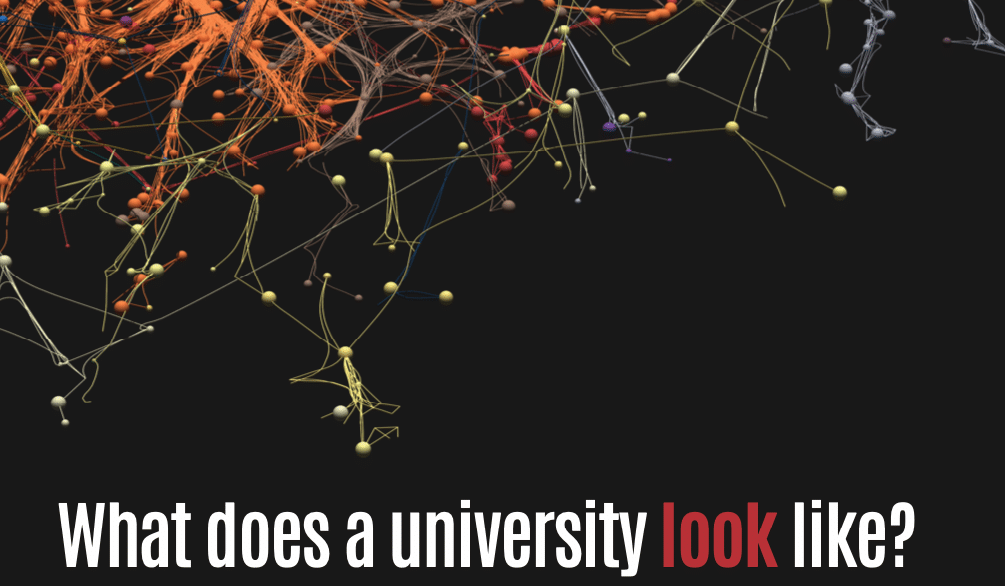
Research institutions need the right tools to discover their strengths and weaknesses, to plan for the future, and to make a greater impact for the communities of tomorrow. In this post, Digital Science’s VP Research Futures, Simon Porter, uses a digital telescope to view the ‘galaxies’ of research within our best and brightest institutions – and explains why that matters.
When we see new images of our universe through the lens of the James Webb Space Telescope (JWST), we’re left in awe of the unique perspective we’ve witnessed, and something about our own universe – even the perception of our own existence – has altered as a result.
What we see are entirely new galaxies, and worlds of possibility.
That’s also what I see when I look at the research data spanning our many universities and research institutions globally. Each one of these institutions represents its own unique universe of research within them.
For me, Dimensions – the world’s largest linked research database and data infrastructure provider – is like the JWST of research data. It enables us to see data in ways we hadn’t thought possible, and it opens up new worlds of possibility, especially for research strategy and decision-making.
What does a university look like?
We began our What does a University Look Like? project in 2019 and it’s rapidly evolved thanks to developments in 3D visualization technology, the expansion of data availability, and the combination of data sources, such as Dimensions and Google BigQuery.
By modelling data from Dimensions into a 3D visualization tool called Blender, we’ve been able to see right into the detail of university research data and capture it in a way that is analogous to the process of taking raw data from JWST and processing it to make a high-quality snapshot of space from afar.
To do this, we’ve used the 2020 Field of Research (FoR) codes, which were developed for research classification in Australia and New Zealand, and we’ve designated a color to each one of those codes (see Figure 2). Each single point of color represents an individual researcher coded by the 2-digit FoR they’re most associated with; researchers are depicted by a sphere, and the size of the sphere is based on the number of publications that researcher has produced.
We then apply algorithms developed by CWTS at Leiden University to determine research clusters – co-authorship networks – within a specific university. These clusters are then layered on top of each other by discipline, with Clinical Science clusters at the bottom, then moving up through Health Sciences, then Science and Engineering, and Linguistics at the top. This is the result.

In Figure 1, we see a 3D visualization of the University of Melbourne, a leading Group of Eight (Go8) research university in Australia. Within this image are 234 research clusters, comprising connections between more than 18,000 co-authored researchers affiliated to the University of Melbourne from 2017-2022.
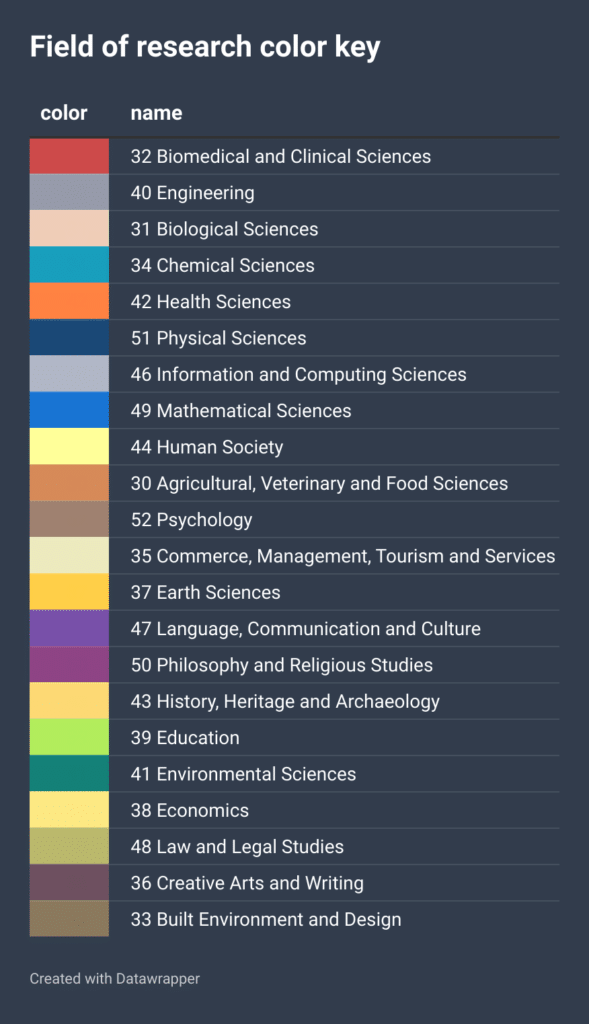
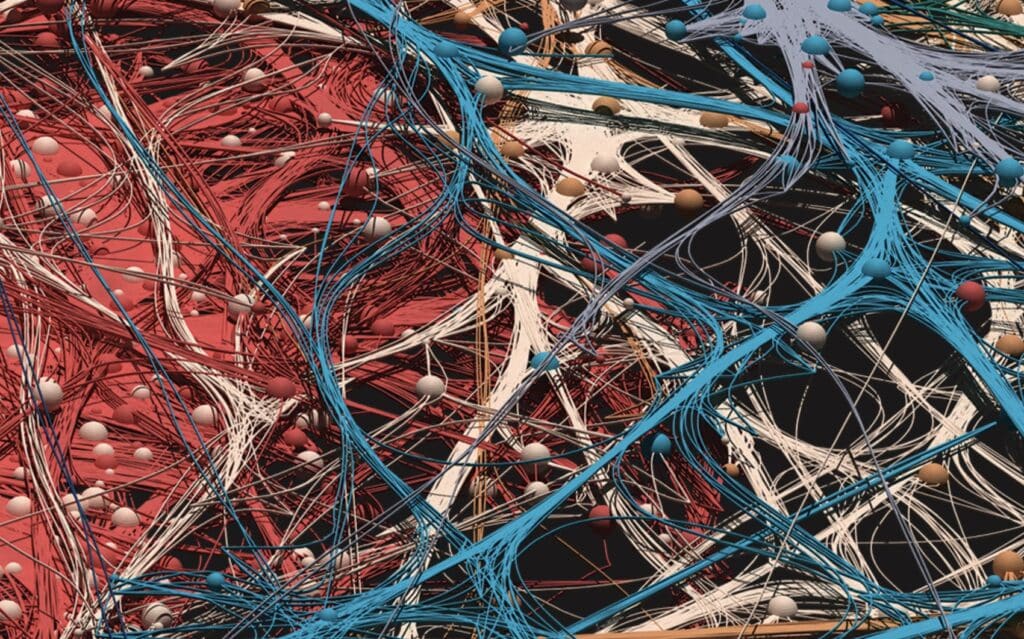
The high-quality nature of this visualization means we can zoom right into the level of the individual sphere (ie, researcher), or pull back to see the bigger picture of the research environment they’re connected to or surrounded by. We can see every research field and every individual or team they’re collaborating with at the university.
If the university has a biological sciences cluster, we can see whether there’s a mathematician interacting with that cluster, clinical scientists, engineers, or someone from the humanities or social sciences. It opens up a new level of understanding about the research landscape of an institution and its individuals.
On our Figshare, you can also watch a video that takes you through the various research clusters found at the University of Melbourne. You can also follow the “What does a university look like?” Figshare project here.
At Digital Science, we’ve created six of these visualizations – five universities from Australia and one from New Zealand – to help demonstrate Dimensions’ unparalleled capabilities to assist with analyzing research data. While many institutions have similarities, some are completely different in research collaboration structures (see Figure 4).
To see a brief video where I walk through all six of the visualizations, visit the Digital Science YouTube.
Looks great – but why does it matter?
These 3D visualizations aren’t just about producing a pretty picture; they’re an elegant and useful way of representing the richness of research data contained about each institution in Dimensions. This is particularly true for university administrations where the ability to measure and promote internal institutional collaboration is just as important as measuring international collaboration.
To illustrate this point, consider the differences between the collaboration structures of the Australian National University (see Figure 4) and the University of Melbourne. Beyond the immediate difference of network size and discipline focus (the University of Melbourne is larger, and has a much larger medical and health sciences footprint), the two universities have very different collaboration shapes, with disciplines more distinctly separate in the ANU graph. That two prestigious research institutions can have such different shapes suggest there are different external forces at play that influence the shape of collaboration.
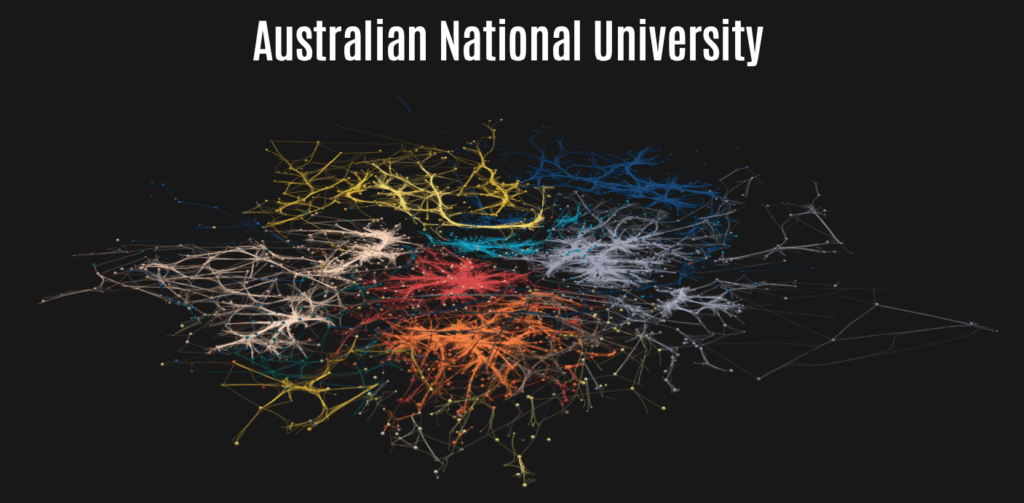
Figure 4 represents the Australian National University (ANU), with more than 5,600 co-authored researchers from 2017-2022 and 75 research clusters identified in the data.
Two reasons that might significantly contribute to the different shape of ANU are its funding model and physical campus shape. ANU’s funding model is unique within Australian higher education, having been endowed with the National Institutes Grant, providing secure and reliable funding for long-term pure and applied research. A key focus of the grant is maintaining and enhancing distinctive concentrations of excellence in research and education, particularly in areas of national importance to Australia. This concentration of excellence is also perhaps reflected in the relative discipline concentration within the visualisation. ANU is also a relatively spread out campus at roughly three times the size of the University of Melbourne’s Parkville campus, making the physical collaboration distance between disciplines larger.
By beginning to identify how factors such as size of campus and funding models can influence the collaboration structures provides key insights for universities, governments and funders. The relative ease of creating these models based on Dimensions data opens the possibility of creating collaboration benchmarks able to be correlated with other external factors. These insights can in turn help shape interventions that maximise local collaboration, in line with the culture of the institution. As with stargazing, the more you look into the past, the better you can see the future.
Note: Simon Porter first shared these visualizations at the Digital Science Showcase in Melbourne, Australia (28 February to 2 March 2023).

About Dimensions
Part of Digital Science, Dimensions is the largest linked research database and data infrastructure provider, re-imagining research discovery with access to grants, publications, clinical trials, patents and policy documents all in one place. www.dimensions.ai
About the Author

Simon Porter, VP Research Futures | Digital Science
Simon Porter has forged a career transforming university practices in how data about research is used, both from administrative and eResearch perspectives. As well as making key contributions to research information visualization, he is well known for his advocacy of Research Profiling Systems and their capability to create new opportunities for researchers.
The post Discovering ‘galaxies’ of research within universities appeared first on Digital Science.
from Digital Science https://ift.tt/sJEt1jl
My First 100 Days: Leadership for Change
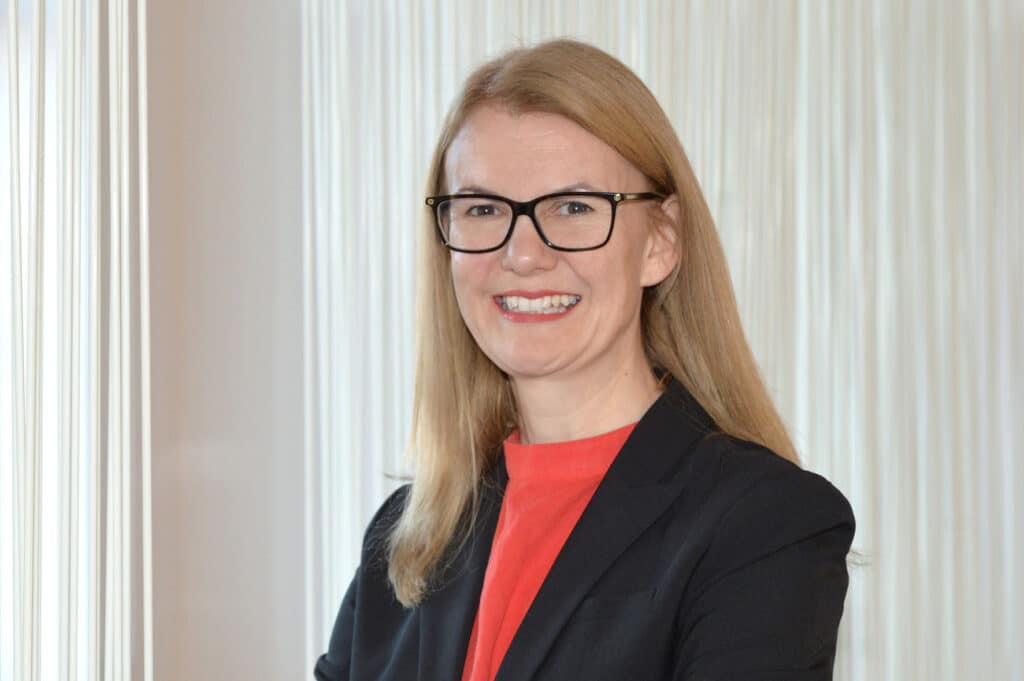
In keeping with many Digital Science new starters, Chief of Staff Alison Mitchell has had an exhilarating first few months at the company. Here she reflects on the theme of change in terms of leadership and growth in a complex organization.
For many years I’ve watched Digital Science from afar, and I’ve always been aware of its long-held commitment to helping researchers and research institutions make a difference. For more than a decade, Digital Science has been committed to maximizing the impact research and researchers can have throughout society. We do this by providing researchers with the full range of data they need, by giving them access to analytics that enable better decision-making about research, and by supplying better tools to help communicate the outcomes – including the impact – of their research more broadly.
We’re in an era of major crises across the world that can be solved only through open debate and knowledge sharing, and it’s rewarding and energizing to be part of an organization that is committed to listening to, understanding and helping to solve the problems faced in the research ecosystem.
Once you join Digital Science, it’s clear from day one that everyone has a shared desire to help researchers create a positive impact on the world. To do this consistently well – to continue to serve researchers and solve their pain points – we need to understand the people who use our products and evolve how we work with them. As we continue on our journey to achieve that mission, Digital Science is focused on listening to our customers’ needs, building on the close working relationships we’ve developed, and offering multi-product experiences as products become more integrated across all our different user groups. This integrated approach will not only lead to more benefits for customers, but it will also open up potential new solutions to pressing academic and research problems. For example, we’ve developed Dimensions Modules&Apps in 2023, which provides analytical and workflow apps for different users and use cases, all drawing on the world’s largest linked research information dataset.
Change is also happening quickly in terms of our people, and within my own Chief of Staff area we have already created two new teams. The first is a Business Intelligence Unit, led by Dr Jennifer Wooldridge, which will support the business with timely, accurate, easy-to-use reporting and analysis on performance, competitors and the wider market. The second is a new team that will lead the company in exploring new ideas and insights across the research ecosystem. We’ve called the team ‘TL;DR’ – a play on the fact that we’re trying to be brief and accessible – and launched a new website to host the blogs, interviews and other content that the team produces. The team includes former Overleaf CEO John Hammersley, founder of Ripeta Leslie McIntosh, and other Digital Science leaders Suze Kundu, Briony Fane and Simon Porter who, together, are aiming to develop a “new avenue for interesting things”.
I titled this post “leadership for change” because change has been the theme of my first months with Digital Science. I see a company that’s moving from its sometimes disparate start-up roots to being a joined-up team that’s evolving and scaling to meet the needs of the important communities it serves – all the while maintaining the spirit of innovation that I knew Digital Science for before I joined. It’s an exciting journey, and I’m proud to be a part of it.
Alison Mitchell
Chief of Staff
10 May 2023
The post My First 100 Days: Leadership for Change appeared first on Digital Science.
from Digital Science https://ift.tt/p7STvGM
This Number Clique Just Got More Exclusive: Mathematicians Finally Make a Breakthrough on the Ramsey Number
The Ramsey number’s upper bound hasn’t changed since Paul Erdős calculated it in 1935
Vist websit : https://new-science-inventions.sciencefather.com/
Facebook : https://www.facebook.com/kaylee.rowan.92
Twitter : https://twitter.com/ScienceInventi1
Pinterest : https://in.pinterest.com/scienceinventions/.....
Blog : https://draft.blogger.com/u/3/blog/stats/week/4483905974389588726.
Tumblr : https://kayleerowan.tumblr.com.....
Linkedin : https://www.linkedin.com/feed/...
Featured Post
❄️Thermodynamic Analysis of Liquid Air Energy Storage Integrated with LNG Cold Energy Recovery🔥
Liquid Air Energy Storage (LAES) is an emerging large-scale energy storage technology that stores electricity by liquefying air at low tempe...

Popular
-
Word choice may seem out of place among the myriad factors that can influence outcomes for a complex condition like alcohol use disorder (...
-
RWS prides itself on the depth and breadth of the Researchers who power our business and deliver value to our clients. We are always accepti...
-
The National Ignition Facility (NIF) has achieved fusion ignition using powerful laser systems and x-rays. Image credit: NIF, Lawrence ...


